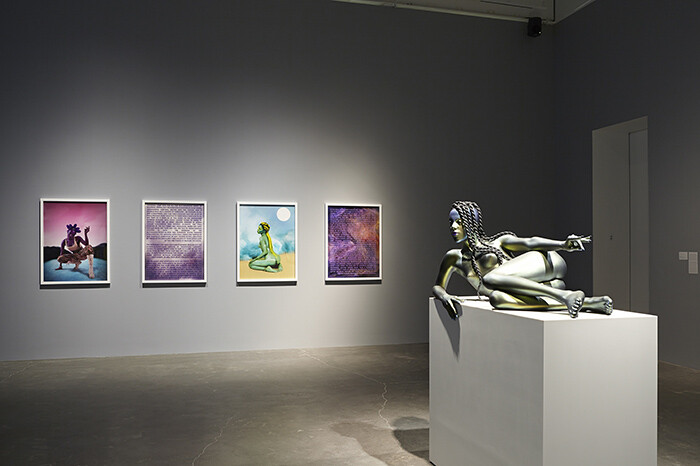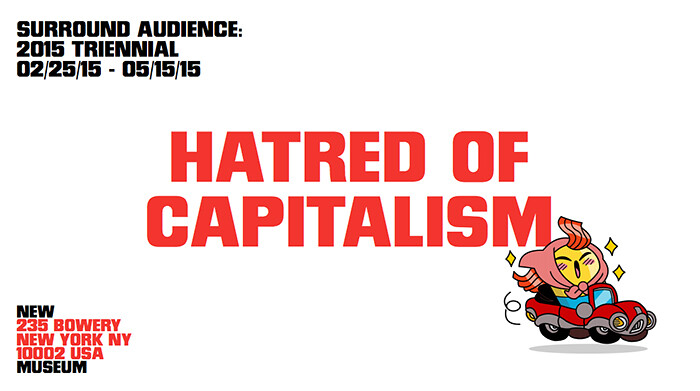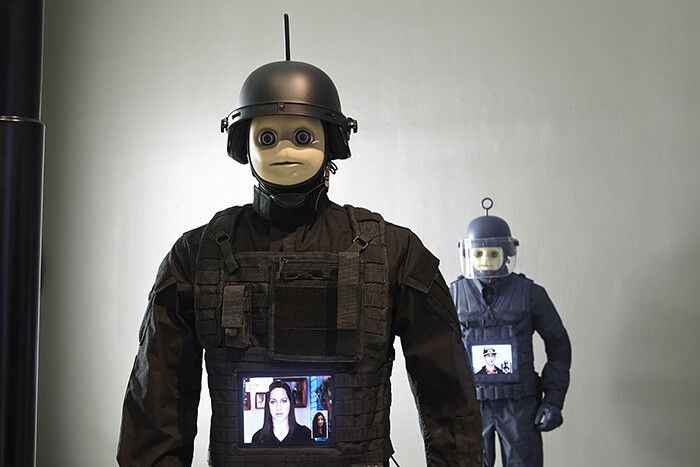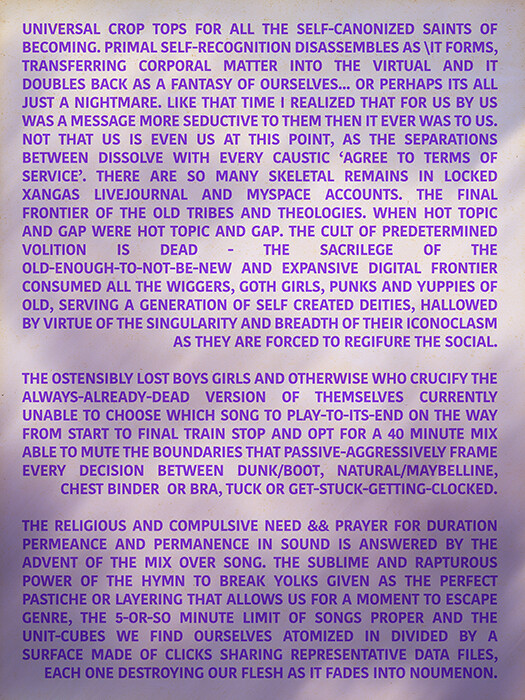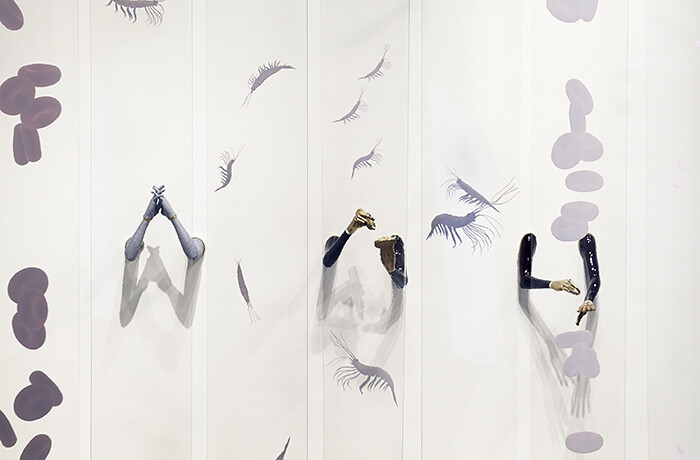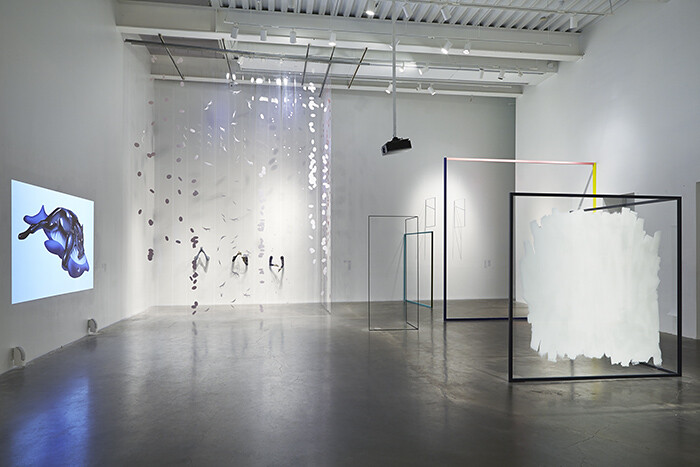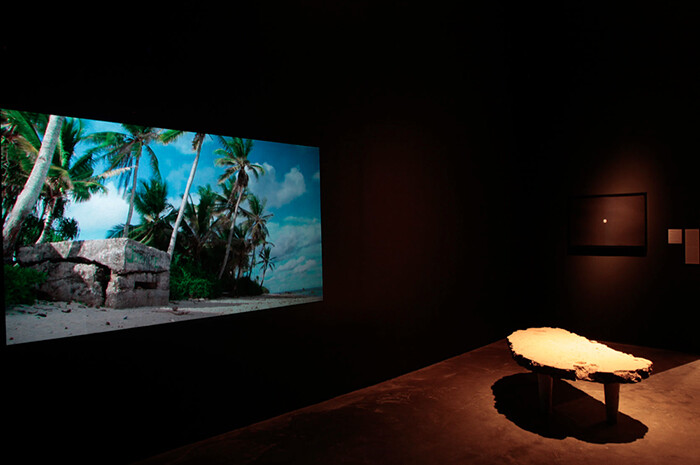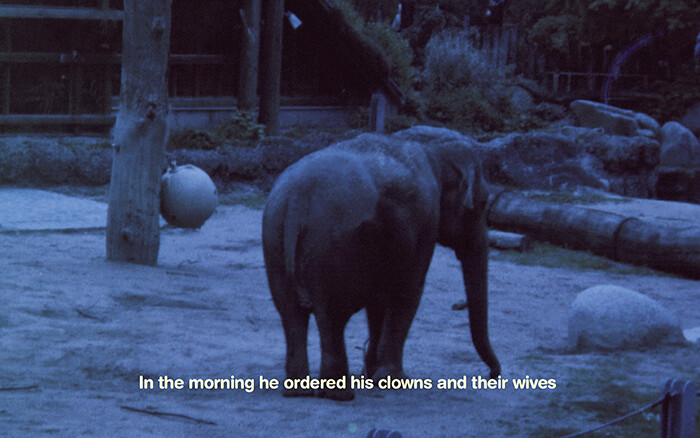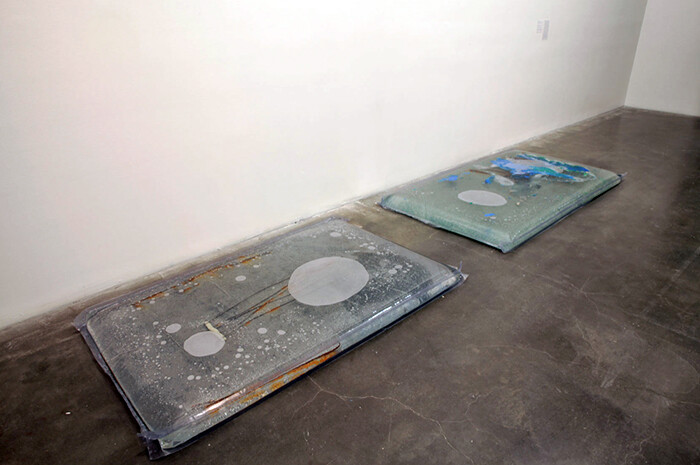The phrase “Surround Audience” sounds like it could be the name of an EDM party, a function in a home theater system, a Quickmeme caption, or Michael Fried’s worst nightmare. It is actually the title-cum-motto-cum-slogan of the 2015 New Museum Triennial, which at first glance appears to be some mixture of these descriptors. The current Triennial, curated by Lauren Cornell and the artist Ryan Trecartin, is the third installment of an event that has quickly realized its ambition of becoming New York’s leading exhibition of on-trend global contemporary art. As if this weren’t enough, the current Triennial aspires to expand into a kind of aggregative platform: hosting performances, publishing a poetry collection, and sponsoring residencies, research projects, and a web series.
Visitors to the Triennial will indeed feel themselves surrounded, even overrun by competing appeals for their attention. These bids are so numerous and elaborate that at times the show seems less like an art exhibition than a tech convention or a curated Tumblr. To be fair, such heterogeneity is endemic in biennials, which tend to be at cross purposes in trying to craft a cohesive, timely statement from disparate works chosen for divergent reasons. Depending on one’s age, taste, and stimulus threshold, this tension might be a distracting nuisance, or perhaps a problem worth reflecting on. Those of selective, delicate, or “critical” dispositions should by all means visit the Triennial, but are advised to regard it as three more or less separate exhibitions; these are described below in ascending order of their presumable appeal to such an audience.
The first of these is loud, shiny, cool, and young. It basically amounts to a trend forecasting report, which is not surprising given the participation of the soi-disant collectives K-HOLE and DIS, which unapologetically compare or even equate their art to consulting, advertising, and merchandizing. This ploy arguably has less to do with Warhol, who flirted with tragic irony, than with the more purely cynical Jeff Koons or Damien Hirst. K-HOLE’s ad campaign, which is somehow more inane than their pseudo-trend normcore, features slogans like “HATRED OF CAPITALISM,” which in this context is so ludicrous as to almost be an insult to capitalism. While the ads are easily enough ignored, at least once inside the museum, the same can’t be said for the DIS contribution, The Island (KEN) (2015), in which a stress-relieving luxury shower will doubtless serve as a popular selfie station, as well as a platform for the Red Bull-sponsored DIScourse (sic) of invited theorists, some of whom openly identify as Marxist. #accelerationism #srsly?
In a feat of curatorial legerdemain, this part of the Triennial showcases post-internet art without actually using that now unfashionable term. If this art and much of the debate around it were deservedly criticized as forms of self-promotional branding, they also promoted the McLuhanite fantasy that The Internet Changed Everything, ignoring the ways that digitalization has reinforced existing socioeconomic divisions. The problem was not that post-internet is a utopian notion, but rather that its dystopianism was merely atmospheric or gestural. It is one thing to surround an audience with reminders of its immersion in techno-spectacle; it is another to explore why this matters.
As an artist, Trecartin has taken such inquiries further than some critics realize; the scrappy, Ritalin-addled character of his work can disguise its perverse genius. As a curator, he and Cornell have chosen some works that can’t quite live up to his example. Daniel Steegmann Mangrané uses a VR gaming headset to immerse viewers in a laser-scanned rendering of an endangered Brazilian ecosystem (Phantom, 2015) without seeming to register the flagrant contradiction between these environments. Josh Kline does some clever things with face substitution software, only to brandish it clumsily in an installation that recalls the overtness of Ed Kienholz (Freedom, 2015). The most interesting and problematic of such practices belongs to Juliana Huxtable, whose four prints from the series “UNIVERSAL CROP TOPS FOR ALL THE SELF CANONIZED SAINTS OF BECOMING” (2015) are coupled with a life-size 3D-printed sculptural avatar of her body by Frank Benson (Juliana, 2015). While Huxtable’s work provocatively integrates the histories of Afrofuturism, black militancy, and cyber-feminist theory with the contemporary efforts of transgender activists, it also exemplifies the contradictions of a post-Fordist identity politics in which self-styling, no matter how radical, can simultaneously produce value through the commodification of difference.
The second “exhibition” within the Triennial, while much less conspicuous, forms the bulk of the show and consists mainly of work by emerging artists born outside the North Atlantic. Given that New York remains the most provincial and self-obsessed of the art world’s major centers—witness the New Museum’s 2013 show “NYC 1993”—this is welcome, even subversive. That said, the selection skews toward artists working in the EU and within familiar, market-sanctioned modes. Beijing-based Guan Xiao juxtaposes repurposed camera equipment with constructed artifacts to track the emergence of new techno-animisms in The Documentary: Geocentric Puncture (2012). The Indian artist Shreyas Karle has mined the Bollywood imaginary to produce the Daniel Spoerri-esque Museum Shop of Fetish Objects (2012), which casts a sly eye back on the exoticizing impulses of its host institution. Georgian-born Ketuta Alexi-Meskishvili contributes a captivating suite of semi-abstract photographs; these stand out in a show where abstraction, painterly or otherwise, is noticeably absent. However, although such works are perfectly well executed, they often fail to problematize their status within the emergent, increasingly dominant category of Global Contemporary Art, in which artworks tend to present their own singularity in paradoxically generic or universalizing terms.
It is only in our third hypothetical show-within-the-show that such contradictions are engaged thoughtfully and productively. One can imagine re-curating the Triennial into a tighter, more powerful exhibition featuring the work of about a dozen artists. Some pieces would engage new technologies from a position of critical immanence. These would include Li Liao’s Consumption (2012), in which Li worked 5 weeks of 12-hour shifts at a Foxconn plant, earning just enough to buy one of the iPads he was helping to manufacture; Aleksandra Domanović’s SOHO (Substances of Human Origin) (2015), which proposes an alternative genealogy for technicized embodiment through 3D-printed sculptures patterned after the Belgrade Hand, an early prosthetic developed in 1960s Yugoslavia; and Exterritory’s Image Blockade (2014), a research project based on neurobiological experiments with conscientious objectors from an elite Israeli military intelligence unit. (One can’t help but notice that this piece, easily the most confrontational one in the Triennial, is installed in what must be the most inaccessible location in the New Museum, in the far corner of the topmost floor.)
A second strand would comprise moving-image work made in speculative or essayistic modes. While such an approach is hardly uncommon, especially in Europe, its still-considerable potential is demonstrated by artists like Nicholas Mangan, who re-narrates the recent history of resource extraction in Micronesia from the perspective of a limestone pinnacle (Nauru, Notes from a Cretaceous World, 2009), or Oliver Laric, who locates a surprising degree of pathos in the transformation of animated characters, updating classical myths of metamorphosis in a moment of Tindr romance and imposed vocational “flexibility” (Untitled, 2014–2015). Especially noteworthy is Basim Magdy’s marvelous short film The Dent (2014), which nods to Alexander Kluge in its parabolic style and its subject (circus elephants), interweaving references to ecology and biennialization with lustrous double-exposed shots of clouds, forests, and construction equipment.
The last group one might wish to extract from the Triennial includes artists working in a more poetic mode, favoring obliquity, facture, and restraint. Olga Balema exemplifies this orientation in her untitled contributions: two large plastic sacs containing rusting rebar, decaying images, and water (both 2015). It is easier to trip over these unprepossessing floor sculptures than it is to grasp their quasi-abstract, semi-organic form, which seems to equally recall tidal pools and IV bags. Kiluanji Kia Henda’s prints combine the idioms of conceptual photography and traditional Angolan sona drawing to suggestively indicate the vicissitudes of global development (Rusty Mirage (The City Skyline), 2013). And in one of the Triennial’s most memorable pieces, Not How People Move But What Moves Them (2013–ongoing), the Czech artist Eva Kotátková has covered a large wall with pottery, architectural fixtures, and wire sculptures of unclear origin and function. These elements become props in a obscure and bewitching tableau vivant, which transforms the precedents of Jirí Kovanda and Rebecca Horn into a compelling drama of constrained movement. In such moments, the phrase “Surround Audience” assumes a markedly different connotation, one that the Triennial only intermittently endorses. Here, it is not a meme or a brand; rather, it becomes a problem, an injunction, and above all a point of departure.
